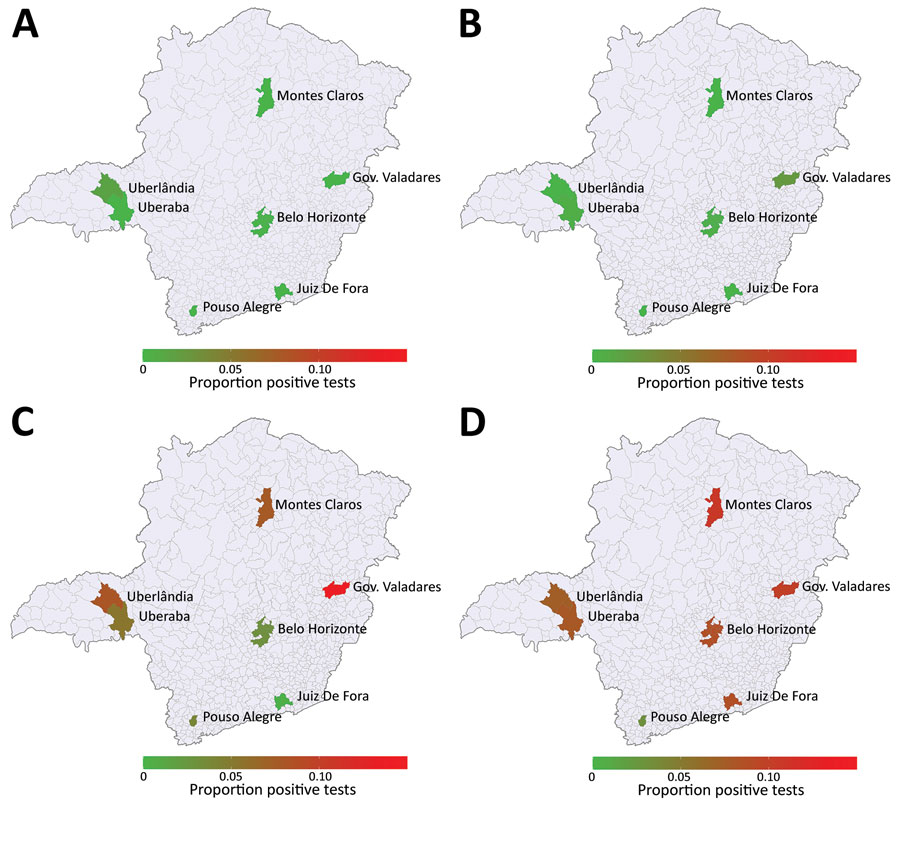Volume 28, Number 4—April 2022
Research
SARS-CoV-2 IgG Seroprevalence among Blood Donors as a Monitor of the COVID-19 Epidemic, Brazil
Figure 1

Figure 1. Temporal evolving cumulative severe acute respiratory syndrome coronavirus 2 (SARS-CoV-2) seroprevalence in HEMOMINAS Foundation blood donation centers in 7 cities of Minas Gerais, Brazil, March–December 2020. A) March; B) June; C) September; D) December. Data represent SARS-CoV-2 IgG seropositivity among persons eligible to donate blood. Scale bar represents cumulative proportion of SARS-CoV-2 IgG seropositivity per 100,000 population. Gov., Governador.
1These authors contributed equally to this article.
Page created: February 09, 2022
Page updated: March 19, 2022
Page reviewed: March 19, 2022
The conclusions, findings, and opinions expressed by authors contributing to this journal do not necessarily reflect the official position of the U.S. Department of Health and Human Services, the Public Health Service, the Centers for Disease Control and Prevention, or the authors' affiliated institutions. Use of trade names is for identification only and does not imply endorsement by any of the groups named above.